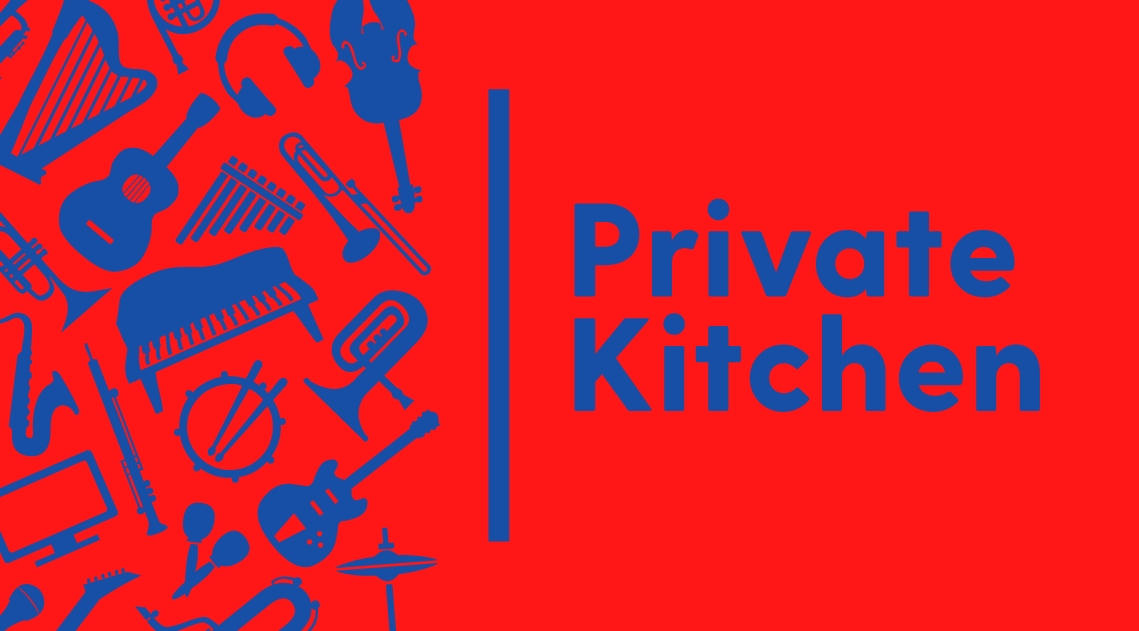
Private Kitchen
EDITION #4
MUSIC AND INTERACTIVE SOUND ART
In this edition of Private Kitchen, we’ll meet in the Main Course Nick Verstand and Salvador Breed who create together amazing interactive art installations. We have a look in My Kitchen of composer and performer Evelien van den Broek. And we go international with sound artist and composer Malu Peeters in World Cuisine.
UK composer Chris Smith investigates the potential for sound in interactive art and our guest editor Sander Huiberts takes a closer look at artificial intelligence and its potential for music and sound.

Private Kitchen |
#4 MUSIC AND INTERACTIVE SOUND ART
IN THIS EDITION
Filmcomposer Loek Dikker reflects on the combination of art and science in the impressive art installation Mutual Wave Machine.
Composer, performer and producer Evelien van den Broek answers the 10 well-known questions and thus provides insight in her creative process.
Sander Huiberts from creativehero.es and HKU Music and Technology Donec checks out Artificial Intelligence in music and how composers can deal with AI.
Nick Verstand, audiovisual artist, and Salvador Breed, audio freak, elaborate on their collaboration and the associated creative processes in interactive art installations.
Malu Peeters is a sound artist and composer based in Berlin telling us everything about her international career and the related projects.
The UK based composer and our regular columnist Chris Smith investigates the possible similarities between the Aeolian harp and interactive sound art.

Amuse
Interactive art in context. But what about the music? Part I
Science has proven that music does bring people together!
Loek Dikker - film composer
The possibilities to use music interactively with another medium are endless. But what if scientific research is also added? Or, combined into "Art / Science installations"?
The impressive installation "Mutual Wave Machine" by Suzanne Dikker and Matthias Oostrik is one of the world's most successful art / science projects of the last decade. The history of this project leads us back to a 2010 performance by Marina Abramovic, entitled "The Artist is Present", at the New York Museum of Modern Art (MoMa). It was a test of non-verbal communication, in which two chairs were set up in a dimly lit, medium-sized square room. Marina sat on one of those chairs, a loose-fitting fabric beautifully draped around her, hiding her chair. An empty chair stood opposite her. People from the audience were invited sit down on it and connect with her by looking at her -if you had the courage to do so, because it appeared that Marina could make you cry or laugh with her gaze alone.
Through theatermaker Robert Wilson's Watermill Center, Abramovic came into contact with neurolinguist Suzanne Dikker during the "Annual Art & Science: Insights into Consciousness Workshop". Participants of this workshop included artists, neuroscientists and psychotherapists. During the 2010 iteration, they discussed The Artist Is Present at length and concluded that it raised scientifically interesting questions regarding the relationship between eye contact, human connectedness and brain synchronization. What does it mean to be on the same wavelength with someone else? To ensure that the project served both artistic and scientific purposes, the team was expanded with Matthias Oostrik, a Dutch media artist.
The installation, "Measuring the Magic of Mutual Gaze" was exhibited in Moscow in 2011 as part of Abramovic' retrospective exhibition "The Artist is Present", at the famous "Garage Museum of Contemporary Art". The scientific research took place with the help of sensors placed on the head of the subjects to measure the electrical currents in the brain (EEG). The effect of this electrical activity became visible in the static projection of two images of the brain. Moments of synchrony between the brainwaves of the two people were reflected by lightning rod style flows between the two rotating brains. Marina performed during the premiere by taking a seat in one of the chairs, in front of people from the audience.
Measuring the Magic of Mutual Gaze,” by Marina Abramovic, Suzanne Dikker, Matthias Oostrik, and participants of the Watermill Art & Science: Insights into Consciousness Workshop. Copyright Marina Abramovic, 2011. Photo by Maxim Lubimov, Garage Center for Contemporary Culture
Two years later, the theater premiere of “The Mutual Wave Machine” took place during Museum Night at EYE Film Institute. This time, Oostrik and Dikker collaborated with video artist Peter Burr, as well as Matthew Patterson Curry (aka Safety Scissors), who provided the project with sound design and composition.
Even before opening hour, a line of festival goers was waiting to participate in the project. At a separate table, employees were busy equipping the candidates with sensors needed for the experiment.
The arrangement was in a blackbox theater of EYE, an egg-shaped sphere containing two seats in front of the rather steep grandstand. The sound design gently crackled and murmured, and the spectators assumed an attitude of calm, almost religious attention and curiosity.
Two participants sat opposite each other on the seats, they whispered, looked at each other, their thoughts discoloring the walls of the cocoon and turning the murmur into music. Through the sound of the music you could guess whether or not the test subjects were in communication with each other. Participants' EEG was recorded and used for scientific analysis.
The “sound” within this project has a clear iconic function; the resounding result indicates that the participants are "on the same wavelength".
But is there also room for the music itself as the aim of this research? Yes: Dikker and Oostrik recently collaborated with rapper Residente and pop artist Bad Bunny, both of Puerto Rican origin: they recorded their brainwaves with the intention of including brain synchronization in their joint song Bellacoso.
In this project, entitled “Ondas”, Residente sought out other music artists with whom at first glance he has little in common. With Bad Bunny, who is a generation younger than he is, he drank a glass of rum and they admired dancers, with the goal to find common ground. Their brainwaves synchronized as they tried to recall a song together.
And thus we arrive at the main course of the musical dinner.
Music is not only capable of reflecting when people come together (like the brainwaves in the Mutual Wave Machine do), but it also brings people together!
That is its strength, that is the aroma that, above all else, predominates in the composer's kitchen.
Loek Dikker
Jazz pianist
Film composer
Chairman of Music Institute MultiMedia

My Kitchen
An interview with EVELIEN VAN DEN BROEK
Dutch-Swiss composer, performer and producer Evelien van den Broek creates electronic music for live performance, film, modern dance, installations and sound walks. She has released the albums Endlings, False Memories, Malerwanderweg Songs, and London (with Daisy Bell). Her latest project is Biophonica, with electronic music about extinction, using field recordings of extinct and endangered animals, trumpet, electronics and two growling and chirping analogue synths.
In her KUrKKU performances Evelien transforms her voice with live electronics, using Wii game controllers, a foot pedal and five neon yellow speakers. With the indietronica band Daisy Bell she played at State-X New Forms and the Avantgarde Festival (D). With Daisy Bell she made the show Year Without A Summer, performed with gamelan ensemble Gending and featuring Graham Lewis (Wire) on video. In 2015 their debut album ‘London’ was released at Opa Loka Records.
Evelien has composed for numerous documentaries, including ‘LA Raeven – beyond the imagine’ and ‘.tibbaR’ (winner of the Dutch Golden Calf and several international awards). With Dyane Donck she made the sound installations Yesterday and Circlectric. She performed in Donck’s multidisciplinary concert ‘The Obscure Thoughts of Isabella Green’. With choreographer/dancer Eva Baumann she made five dance performances, of which Solitaire was nominated for the Stuttgarter Tanz- und Theater Preis. For Soundtrackcity and Internationaal Theater Amsterdam Evelien made the sound walk ‘Stemmengeschuifel, met Heijermans door de Pijp’ with Renate Zentschnig. In 2016 her first full length show ‘False Memories’ premiered at the November Music festival. Evelien holds a Bachelor of Music (with Honours) and Master of Arts degree from Music and Technology at the Utrecht School of Arts (NL).

MY KITCHEN - Evelien van den broek
interview part I
In this first part of the interview, the 10 well-known questions, Evelien informs us a.o. about her composition process and the use of her voice in combination with technology.

MY KITCHEN - EVELIEN VAN DEN BROEK
interview part II
In this part of the interview Evelien explains everything about a very special project of her called Biophonica, a project about mass extinction, with nature field recordings, trumpet and electronics.

Biophonica
In Biophonica, Evelien van den Broek gives her sonic reaction to mass extinction caused by mankind. Animals die en masse and we are so alienated from nature that we hardly seem to notice it. With nature recordings of extinct and endangered animals, disturbing trumpet sounds, crushing electronic beats and two chirping, squeaking and growling analog synths, Evelien has made raw, mesmerising and mournful music.

Ecognosis is an interactive installation from BetweenTwoHands with soundscapes composed by Evelien van den Broek.
Ecognosis
N52°21’40.4” E4°54’50.4”
Sander Huiberts
music designer and researcher
Sander Huiberts is a music designer, educator and researcher. He received a PhD degree from the University of Portsmouth for investigating the role of audio for immersion in video games. At the HKU University of the Arts Utrecht he is a course leader and senior lecturer. His fields of expertise are sonic interaction design, game audio design, nonlinear music systems, design for the visually impaired and creative design practices.
As one of the founders of the Amsterdam-based creation studio Creative Heroes he initiates projects and develops concepts. Furthermore, he is a double bass player.

SPOOM - guest editorial
COmputer says yes
by Sander Huiberts - MUSIC DESIGNER & RESEARCHER
For a long time, I was sure music could only be created by people. But the developments of the last two years have given me a wake-up call.
Artificial Intelligence (AI) is finding its way into our field and the technological accomplishments follow each other in rapid succession. The creators of so-called neural networks and deep learning algorithms are trying to get computer systems to do the same things as humans. By using a library of existing music, it is possible to make a system generate an endless number of new artefacts. 120 variations on Danse Macabre? The computer will always deliver, even beyond office hours.
The impact of these developments is going to be huge. A surplus of content may start to appear. Companies are already offering music created by AI and will even try to claim copyrights for computer-generated licks. Will human creativity eventually be replaced? If so, how will creatives make a living?
In my experience, the way the AI produces its output is not always easy to comprehend. The outcomes are not always directly useful because they are far-fetched or mediocre, but can be surprising and at times really inspiring. And I think this is where many will like AI-generated content. In our workflow, we can incorporate AI in the tools we already use. Repetitive actions - think of controlling sampled instruments - can be automated to make us more productive. VST-plugins can inspire us, challenge us to speed up our composition processes or support us with writing lyrics.
Recently, I was experimenting with the tools at Open AI and tried to fool the kitchen recipe generator by listing instruments instead of ingredients:
Sander:
Title: Love song about broken heart
Ingredients:
Bass guitar, Double Bass, Harp, Two flutes, Repetitive drums and Pads in G.
To be honest, I was expecting ridiculous instructions for a bass-heavy lovey-dovey cake but instead the AI returned the following directions:
AI: Play the song with these instruments.
Now that’s a remarkably sane but non-creative answer to my silly question!
Will AI compete with or challenge our creativity? Or is it incapable of being as quirky as a human being? The future will tell. But we must continue to look at how we can organise our creative processes in harmony with new technology. The computer has already said yes. Will you?

Main Course
An interview with NICK VERSTAND AND SALVADOR BREED
INTRODUCTION
Knowing each other already for a long time, Nick Verstand and Salvador Breed know how to shape their collaboration. Together they developed an impressive portfolio filled with a variety of interactive art and sonic installations. Their work is shown worldwide at places and events such as Stedelijk Museum Amsterdam, The Shed (NYC), STRP Festival, Design Society (CHN), Paris Couture Week (FR), De School, SXSW (USA), Dekmantel, Art Central Hong Kong, Design Museum Gent (BE), Iceland Airwaves (IS) and the Dutch Design Week. Dezeen selected their project AURA as one of the top 10 art installations of 2017, alongside Olafur Eliasson, Ai Weiwei and Anish Kapoor.
NICK VERSTAND
Nick Verstand is a contemporary artist researching human perception through spatial audiovisual compositions. His autonomous installations and live performances investigate the frontier between the material and the immaterial, and are created through collaborative design processes aimed at breaking down social boundaries. The resulting intuitive experiences, co-creations of artist and audience, generate a hypnotizing environment for the subconscious mind.
SALVADOR BREED
Salvador Breed creates and sculpts sound and technology for a wide field of contexts like live performances, fashion shows, video art, and interactive art installations. He preoccupies himself with the way acoustics, natural ambiance, silence, and space enrich one another, using subtle means to expand our notions of listening, experiencing, and sensing. He could be considered a choreographer of sound, as well as a composer: he acts in ways that allow even the most discordant sounds to work together, heightening the significance of moments we deem fleeting.
WHO ARE NICK VERSTAND AND SALVADOR BREED?
Nick and Salvador tell us how they started their careers and their collaboration in ‘night life’ and explain themselves in becoming an ‘artist’ and ‘audio freak’.
AN IN-DEPTH LOOK AT THE ANIMA INSTALLATION
Nick and Salvador tell us in detail about the becoming of Anima, how to maintain and improve an interactive installation that is already running for seven years at various locations, and all about the interactivity in Anima.
ABOUT COLLABORATION &
THE RESONANCE ROOM
INSTALLATION
This chapter is about managing expectations, collaboration and the concept and realisation of Resonance Room, an installation in Museum van de Geest.

AURA
AURA (2017) is an audiovisual installation that materializes emotions into a perceptible, physical form. The audience' own emotional experience manifests as organic, pulsing light compositions of various form, colour and intensity.
BETWEEN MIND AND MATTER & 4DSOUND
In this chapter we watch a clip about the impressive installation Between Mind and Matter. Nick and Salvador discuss the importance of space (4DSOUND) in composing music for installations.
FUTURE PLANS WITH
EEFJE DE VISSER,WENDE SNIJDERS, IRIS VAN HERPEN AND THE VENETIAN BIENNALE
This final chapter is about the future plans and projects of Nick and Salvador who enter into a variety of collaborations with artists such as Eefje de Visser and Wende Snijders, fashion designers such as Iris van Herpen and the international stage of the Venetian Biennale.

WORLD CUISINE
An interview with MALU PEETERS
SOUND ARTIST/COMPOSER/SOUND DESIGNER
Malu Peeters is a sound artist/composer/sound designer who lives and works in Berlin and Amsterdam. She creates radio works and installations, electronic music and (spatial) sound design. Malu combines field recordings and Foley with synths, voices and (custom-made) instruments.
Malu studied composition and image & sound at the Royal Conservatory of The Hague. She co-founded the theatre collective le nu perdu (2006-2012) and as of 2012 Malu regularly collaborates with Berlin-based media artist collective machina eX where sound design gets made into the shape of games and toys. Malu is also a member of the Swiss/German performance collective henrike iglesias since 2016, touring internationally to a.o. FIBA Buenos Aires, Brut Vienna, Münchner Kammerspiele, Heidelberger Stückmarkt and Sophiensaele Berlin.
Malu works as supervising sound editor and sound designer for films and documentaries, most recently on Aasivissuit (2020) with Dutch filmmaker and visual artist Jasper Coppes, that screened its world premiere on Nuuk International Film Festival, Greenland;
Malu was a personal assistant to Dutch composer Louis Andriessen (2009 - 2015)and the co-founder, writer and board member of hard//hoofd: the Dutch online magazine for art and (new-)journalism;

Interview MALU PEETERS
and RENS MACHIELSE
World CUISINE
International sound artist and composer Malu Peeters tells us about ‘going international’. After five years in Naples, Italy she ended up in Berlin and she’s working now a.o. with the game collective Machina Ex and the theatre collective Henrike Iglesias. She shows clips from her work and she tells us everything about the inspiration she gets from working in an international context. And she gives away one important advice for those who want to collaborate on an international level, one she got from the well-known Dutch composer Louis Andriessen that is still relevant to her today.
CHRIS SMITH
FILM COMPOSER
Chris Smith is one of the UK's most respected producers and composers of media music, being also involved in creator's rights.
His has been a board member of the British composers' academy BASCA, -now Ivors Academy- and he ran the Faber Music Academy (Faber is representing composers like Danny Elfman and Thomas Adès). Recently he is a board director of PCAM, the society for composers and producers of mediamusic.

GRAND DESSERT
MUSIC & INTERACTIVE SOUND ART
The Potential for Sound:
Thoughts on the Nature of Interactive Art
by Chris Smith - Film Composer
An Aeolian harp sitting on a windless hill makes no sound.
And neither do any of my guitars, sitting on their stands on the other side of the studio.
These instruments in their different ways provide a source of sound, but they do not cause sound to happen. In the case of my guitars, I cause sound to emerge by playing them. The Aeolian harp is waiting for a breeze, to show us what it can do. All instruments, like all tools, require an interaction, a catalyst, to take effect.
But the fundamental difference between the Aeolian harp and my guitar,is the element of control. The performer practices in order to achieve mastery of his or her instrument. Similarly, the composer adds minute detail to a score, in order to control and define the end result.
The harp luthier building the Aeolian harp does not control the sound of his instrument, but rather creates the potential for sound. Having built the instrument, using materials that shape and define its timbre, its creator relinquishes control of its music, passing that task to the random power of the wind.
Interactive sound installations require interdisciplinary skills, that in some ways resemble the relationship between the harp luthier and his/her instrument. Many artists working in this area display extraordinary technical, electronic and scientific precision in the construction of works that in finished form derive much of their charm and fascination from the randomness of the sonic experience they provide.
While researching this article, I was particularly struck by the work of Amsterdam based Fedde ten Berge and a series of his works made in collaboration with ceramicist Frank van Os with the collective title ‘Of Nature & Things’. Apart from the physical beauty of ‘de Stronk’, ‘de Shroom’ and ‘het Ei’, the complexity of the technical aspects of these interactive sound artworks is really quite startling. If you are not already familiar with them, I urge you to check out feddetenberge.nl
I had a recent experience of another type of interactive installation during a visit with my wife to the Royal Botanical Gardens at Kew, close to where we live in London. There is a large and rather beautiful tessellated metallic sculpture called ‘The Hive’ by Wolfgang Buttress. It produces constant swells of sound with nearly 1000 LED lights twinkling randomly. This audio-visual experience is generated by and responding to vibrations produced by bees in one of the hives in the gardens, recorded using an accelerometer. The work is designed to highlight the issue of pollination and food security.
Of course the bees are completely unaware that they are the cause of this potential for sound, any more than the wind is aware of its role in drawing music from an Aeolian harp.
We tend to assume that the concept of “interactive” art refers to human interaction with inanimate creations, but: both The Hive and the harp show how inanimate objects can be the primary actors in the interactive process. Does this perhaps qualify as a type of AI..?
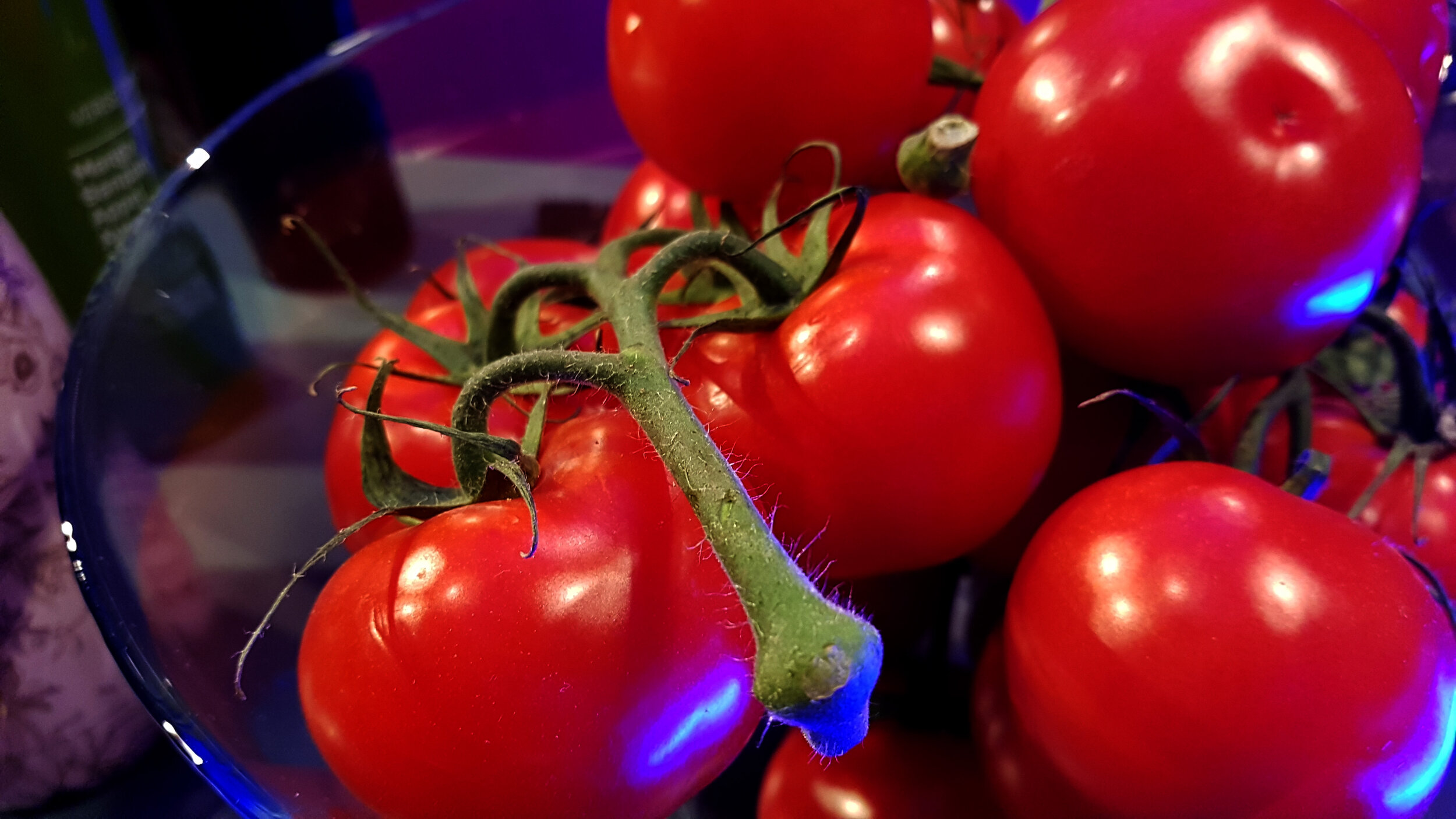

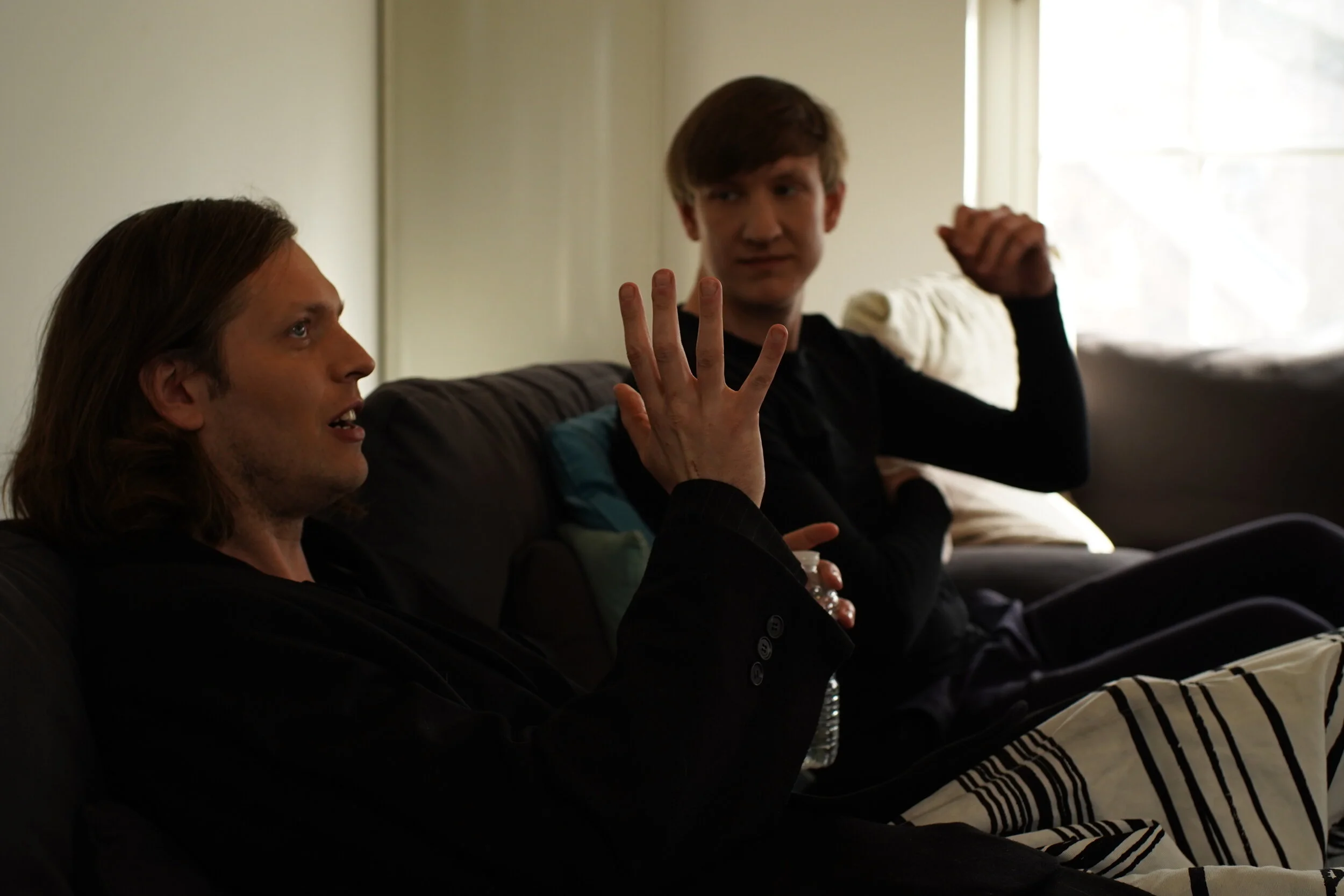


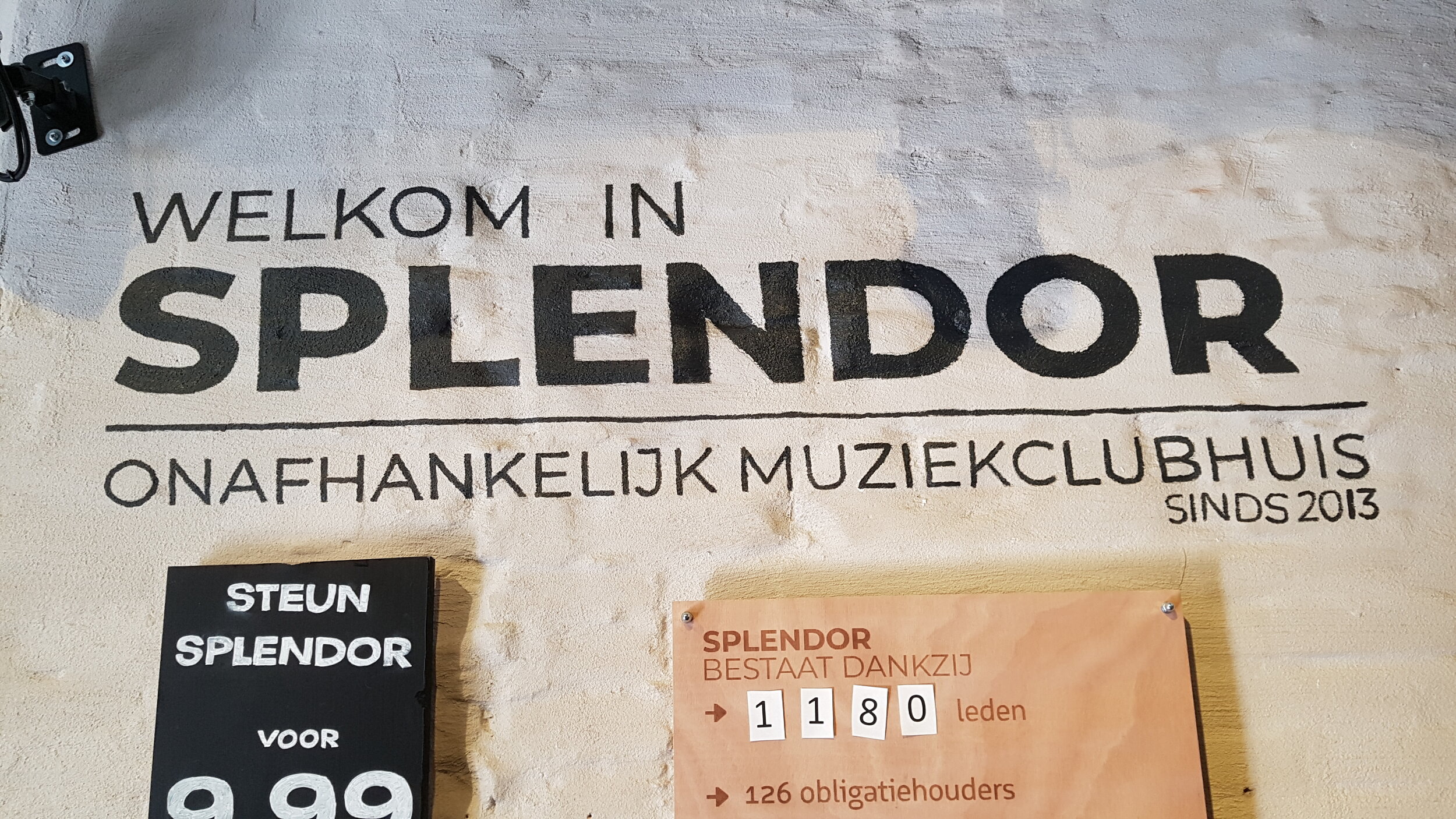



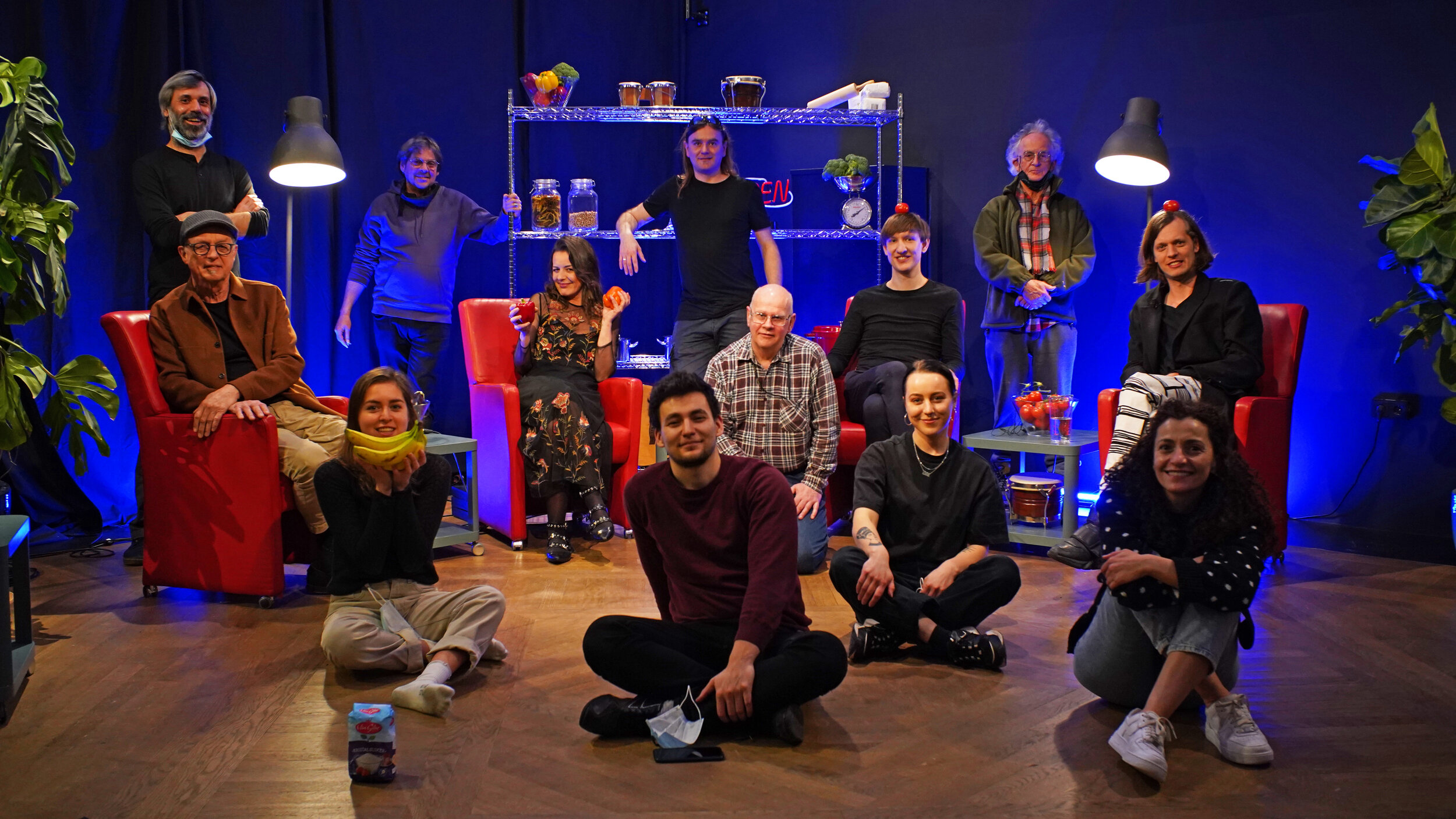

PRIVATE KITCHEN MAGAZINE IS CREATED BY
Private Kitchen - Main Course
Loek Dikker - executive producer
Rens Machielse - executive producer / co-host
Sebastiaan Donders - producer
João Rodrigues - show producer / director
Alexa Rodrigues - host / set design
David Dramm - host Splendor / location
guests:
Nick Verstand - sound artist
Salvador Breed - sound artist
Lucas Kauter - camera / lights / editing
Maja Andersson - camera / photography
Nathalie de Jong - camera
Hans van Eck - sound
Alisa Durgun - make-up / styling
Private Kitchen - World Cuisine
Rens Machielse - host / interview
Sebastiaan Donders - editing
guest:
Malu Peeters - music composer
Private Kitchen - My Kitchen
Rens Machielse - producer
João Rodrigues - AV director
Alexa Rodrigues - host / interview
Maja Andersson - camera / photography
Lucas Kauter - editing
guests:
Evelien van den Broek - music composer
Private Kitchen & Magazine
Rens Machielse - chief editor
Sebastiaan Donders - designer / editor / photography
Loek Dikker - editor
Maja Andersson - photography
